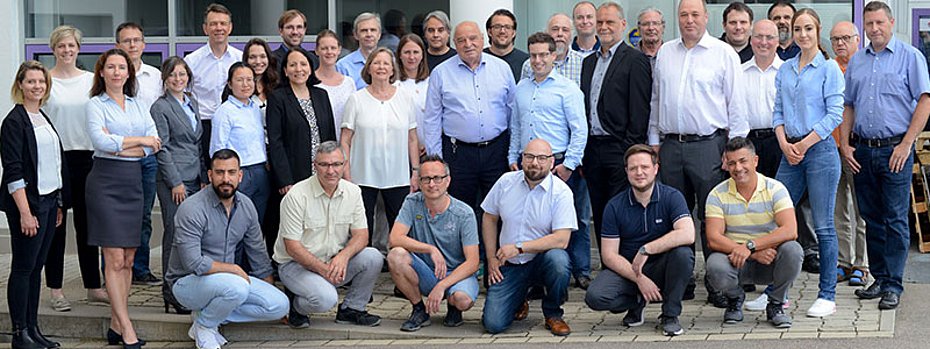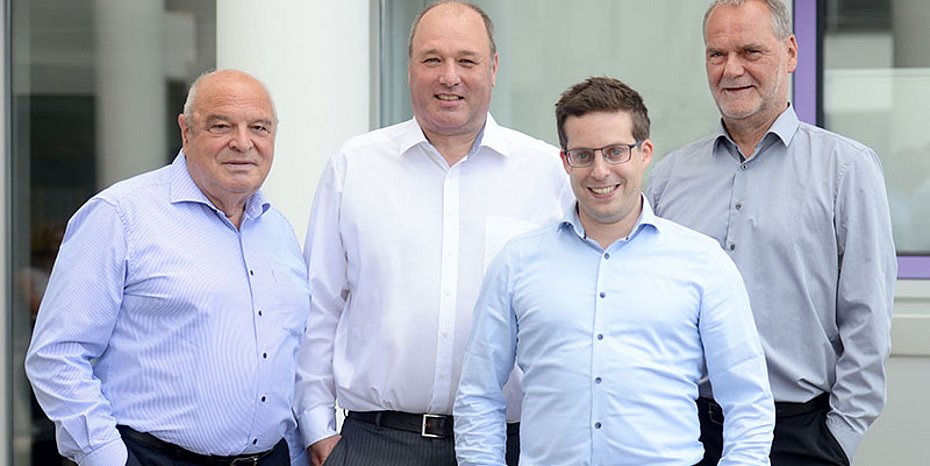DataPhysics Instruments celebrates 25th anniversary
DataPhysics Instruments has been developing, manufacturing and distributing measuring instruments for the investigation of interfaces and surfaces since August 1997. From the beginning, the focus has been on the development of innovative and modular measuring instruments as well as user-friendly software.
Measurement equipment manufacturer DataPhysics Instruments turns 25. Nils Langer, managing partner, says: "This birthday, even after the challenges posed by the Corona pandemic, is an important milestone for DataPhysics Instruments. Over the past 25 years, we have been able to steadily expand our product portfolio. We have customers in over 80 countries and are now 45 employees. We are very well established in the worldwide market for measuring instruments for the characterization of interfaces and surfaces. Now it is our task to continue the successful path of the company in the future."
On the pulse of time right from the start with modular measuring devices
DataPhysics Instruments was founded in August 1997 by Dr. Ulrich Busch, Thorsten Holz and Horst Rau. From the beginning, the company's laboratory measuring instruments were modular in design. This enabled users to configure the measuring instruments of DataPhysics Instruments according to their specific application. In addition, they could evaluate their measurement data immediately after the measurement with software support. At that time, such a modular design was a world first. To this day, the company has remained true to modular instrument design.
With their measuring systems for the investigation of interfaces and surfaces, the three company founders had hit the nerve of the time: In the 1990s, materials and materials research developed by leaps and bounds. Examples include layer systems made of carbon fibers, but also other composite materials for use in the construction and automotive industries, medical technology and electrical engineering. With the focus on new materials, the properties of their surfaces also came to the fore. The buzzword: functionalized surfaces, i.e. surfaces that are optimized for their intended use with the aid of special structuring or pretreatment.
The product portfolio grows
The company's first product was the OCA 20 optical contact angle measuring instrument with the SCA analysis software, also developed in-house. Together, they already enabled contour measurements of hanging and lying drops at that time. In addition, the software could automatically evaluate the measurement data to calculate the contact angle, surface tension and surface energy. Founder and CEO Horst Rau recounts, "The first year and a half we concentrated on development work in order to be able to present our first, market-ready contact angle instrument." At the Analytica trade show in 1998, DataPhysics Instruments successfully presented this, then innovative, measuring device for the first time. Over the years, the company continued to expand the OCA series, so that suitable solutions for many applications are now available, from entry-level models to expert models.
Just in time for the turn of the millennium, DataPhysics Instruments expanded its product portfolio with the force-based tensiometers of the DCAT series and newly developed software. This series also has several models in the meantime. Two years later, a third instrument joined the product portfolio: the SVT spinning drop tensiometer, which can measure low to ultra-low interfacial tensions. In 2012, DataPhysics Instruments additionally launched the HGC series humidity generators. They can be used to set and control relative humidity within measurement chambers. Since 2015, the MultiScan MS 20 stability analysis system has also been part of the product portfolio. It is used for the optical stability and aging analysis of disperse multiphase mixtures.
Developing tomorrow's products today
Today, DataPhysics Instruments is managed by four managing partners: Founder Horst Rau, Nils Langer, Jens Ole Wund and Dr. Sebastian Schaubach. The interest in functionalized surfaces has grown in importance over the past decades, as Managing Director and Sales Manager Nils Langer explains: "Today, research institutions and companies are developing more and more new methods to functionalize surfaces. Plasma treatments and nanostructured surfaces are just two examples. It is therefore all the more important to be able to provide researchers and product developers with measurement technology with which they can analyze the changed functional properties of the surfaces."
For this reason, DataPhysics Instruments is focusing on the further development of existing instrument systems as well as additional new developments. For the OCA series of optical contact angle instruments, the company introduced the new dpiMAX software in early 2022. dpiMAX features a clearly structured, intuitive user interface and intelligent additional functions that make the instruments even easier to operate. "We have achieved another major success with the market launch of the Zeta Potential Analyzer ZPA 20 with its patented measurement methodology," adds Head of Development Jens Ole Wund. The ZPA 20 can determine the surface charge, or more precisely, the zeta potential of samples in aqueous solution by measuring the flow current or streaming potential. To do this, it uses a patented measurement method in which the sample is alternately flowed over from opposite directions.
Shaping the future together
Dr. Sebastian Schaubach, responsible for innovation management, has a clear vision for the future: "We see ourselves as a partner who wants to continue to refine and deepen the scientific analysis of interfaces and surfaces in the future. Our developments are therefore to be created in even closer cooperation with customers in research and industry. After all, it is important to us to develop our measurement systems in such a way that they can reliably solve our customers' challenges." But it is not only the product portfolio that has grown steadily over the years. In the anniversary year 2022, 45 employees work at DataPhysics Instruments. Additional employees are being sought for the areas of development, manufacturing and sales. In addition, the premises at the headquarters in Filderstadt near Stuttgart have steadily expanded. Recently, the in-house application center, with laboratory and training center, was enlarged and newly equipped. Dr. Schaubach explains: "Here we offer test measurements for prospective buyers and contract measurements with all our devices. In addition, we conduct training courses for users."
The company has always remained true to its location - and yet is at home all over the world. To this day, an international network of sales partners ensures that customers all over the world can take advantage of on-site consulting in their preferred language. In order to be even better represented in some target markets, DataPhysics Instruments founded its own companies in several countries: in 2020, DataPhysics Instruments India was established. In addition, the US subsidiary DataPhysics Instruments USA has existed since 2018. Over the past 25 years, DataPhysics Instruments has developed an ever-expanding range of instruments for the analysis of interfaces and surfaces. At the same time, the company has grown in terms of personnel and space. It has also maintained close relationships over the years not only with distributors around the world, but also with its customers in research and product development. These relationships help to develop market-driven products and to optimize the existing portfolio according to customer needs. DataPhysics Instruments looks forward to expanding and deepening these relationships in the future. (OM-08/23)
Contact
DataPhysics Instruments GmbH
Raiffeisenstraße 34
70794 Filderstadt (Germany)
Phone +49 (0)711 77 05 56 0
E-mail: info@dataphysics-instruments.com
www.dataphysics-instruments.com
About DataPhysics Instruments GmbH
DataPhysics Instruments GmbH has been manufacturing measurement technology for the investigation of interfaces and surfaces for 25 years. DataPhysics Instruments instruments can be used to determine important physical and chemical parameters, such as surface tension and energy, adhesion force, static and dynamic contact angles, roughness profiles, zeta potential and destabilization mechanisms.



